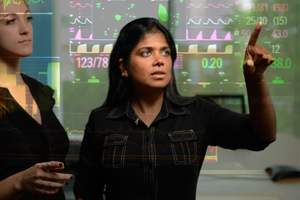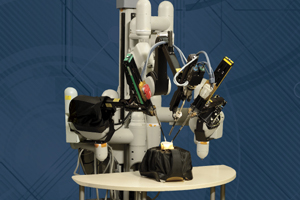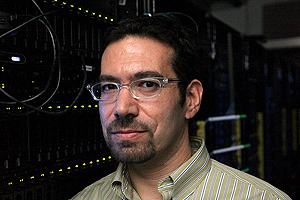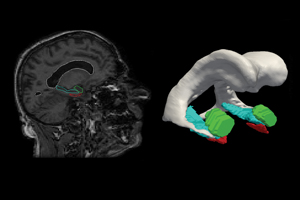
Clearer Vision for Surgeons
Muyinatu A. Lediju Bell is designing a new image-guided surgical system that could give surgeons real-time visuals of the blood vessels, increasing precision and improving patient safety.

Muyinatu A. Lediju Bell is designing a new image-guided surgical system that could give surgeons real-time visuals of the blood vessels, increasing precision and improving patient safety.

Sometimes, materials just don’t behave the way you need them to. So Timothy P. Weihs and his collaborators have gotten creative. By weaving metal threads into intricate patterns, he can make webby 3-D materials with unique properties.

Suchi Saria and colleagues are developing computer programs that analyze existing medical information to manage patients most at risk, allowing clinicians to take action early to prevent organ failure.

An open-source software and electronics kit created by a team of Whiting School faculty members, research engineers, and students for first-generation da Vinci surgical robots is in use at more than 25 research institutions around the world.

When materials scientists want to create steel with specific properties—say, a certain combination of strength, hardness, and fracture resistance—they know how to approach the problem. Materials scientists know much less about how to predict and alter the mechanical properties of metallic glasses and other amorphous solids.

Yair Amir, chair of the Department of Computer Science, has led an effort to protect against the sort of attack that in 2010 disrupted thousands of internet networks in the United States and around the world.

Johns Hopkins engineers are developing high-tech hardhats, collaborating for improved CT scanners, and working towards better tissue repair.

For a disease that’s disturbingly prevalent, Alzheimer’s disease’s cause and cure remains elusive. But researchers know that the brain changes of Alzheimer’s start before symptoms such as memory loss show up.

Cancer cells need oxygen to survive. But scientists had never tracked cancer cells’ search for oxygen in their early growth stages until now—moving medicine a step closer to understanding one way that cancer spreads.